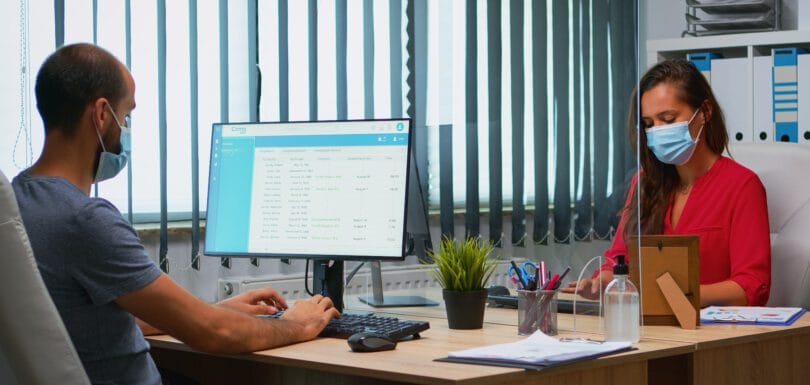Why Virtual Medical Assistants Are Now Vital
Why Virtual Medical Assistants Are Becoming Essential in Modern Clinics The healthcare landscape is rapidly changing, especially in how clinics manage daily operations. With growing patient demands and the push for more efficient care, modern clinics are turning to new technology and workforce solutions. One such innovation gaining widespread attention is the use of virtual medical assistants. These professionals, who work remotely, help medical practices streamline administrative tasks, support clinical workflows, and improve patient communication without needing to be physically present in the clinic. Among the many services virtual medical assistants offer, having a Virtual Front Desk Expert is becoming increasingly valuable. This role handles critical responsibilities such as managing patient appointments, answering calls, and coordinating communications all remotely. By taking over front desk duties virtual assistants free up onsite staff to focus on direct patient care and other important clinical activities. Virtual medical assistants are becoming essential because they offer flexible, cost-effective support that can scale with the clinic’s needs. They allow healthcare providers to focus more on patient care while handling tasks like billing, insurance verification, and electronic health record management. As clinics seek to enhance productivity and patient satisfaction virtual medical assistants are proving to be a vital component in the future of healthcare administration. The Rise of Virtual Medical Assistants Traditionally, medical assistants worked onsite, handling paperwork, answering phones, and supporting doctors with in-person tasks. However, advances in technology, especially cloud computing and secure communication platforms, have made it possible to hire professionals who work remotely. This shift to virtual assistance helps clinics reduce overhead costs such as office space, equipment, and employee benefits. Additionally, the COVID-19 pandemic accelerated the adoption of remote healthcare support, pushing many clinics to rethink their staffing models. Today, healthcare virtual assistant services are no longer just a trend but a practical solution for many medical practices. These services provide reliable administrative support that keeps clinics running smoothly despite challenges like staff shortages or fluctuating patient volumes. Remote virtual assistants offer expertise in various healthcare administrative functions, allowing medical offices to remain agile and responsive. The shift toward virtual assistants is driven by a need to balance quality patient care with operational efficiency, making virtual medical assistants a permanent fixture in modern clinics. Key Roles and Responsibilities Remote medical assistants play a wide range of roles, mostly focusing on administrative and clinical support to lighten the load for onsite staff. Administrative Tasks: One major responsibility is managing scheduling and appointment reminders to reduce no shows and improve patient flow. They also handle billing and insurance verification, ensuring claims are accurate and submitted on time. Many virtual assistants are skilled in managing electronic health records, organizing patient data securely and efficiently. Clinical Support: Beyond administration, virtual medical assistants provide clinical support by assisting with medical documentation and patient follow-up communications. They may help prepare charts, transcribe doctor’s notes, or send post-visit instructions to patients. Telehealth Support: With telemedicine becoming more common, virtual assistants are critical in coordinating virtual visits, managing patient inquiries and supporting telehealth platforms. Their role helps integrate digital health solutions seamlessly into daily operations. Utilizing a virtual medical office assistant or medical virtual assistant services can significantly free up onsite staff, allowing doctors and nurses to concentrate on delivering quality care rather than paperwork. Benefits of Remote Medical Assistants for Modern Clinics When clinics decide to bring remote medical assistants on board, they often notice a range of positive changes. From saving costs to improving patient experiences, these remote professionals offer several valuable advantages that help modern clinics run more smoothly and efficiently. There are several advantages clinics gain by adopting virtual medical assistants: Cost-Effectiveness and Scalability: Virtual assistants reduce the need for physical office space and related expenses, making staffing more affordable. Clinics can scale the support they receive based on demand without long-term commitments. Enhanced Patient Care and Communication: Because virtual assistants handle administrative duties, healthcare providers can dedicate more time to patient care. This improved focus boosts patient satisfaction and engagement. Tools like patient communication tools enhance the overall patient experience by ensuring timely follow-ups and clear information sharing. Improved Clinic Workflow and Productivity: Virtual assistants contribute to clinical workflow optimization by managing appointments, documentation, and billing accurately and efficiently. This smooth operation minimizes errors and delays, which benefits both patients and staff. HIPAA Compliance and Data Security: Many virtual assistants work with platforms that are HIPAA-compliant services, ensuring patient data is handled securely and confidentially. This compliance is critical in maintaining trust and meeting regulatory requirements. Overall, virtual assistants bring operational improvements that increase the clinic’s ability to deliver quality care while managing resources wisely. Challenges and How to Overcome Them While VMAs offer many benefits, some clinics hesitate due to common concerns. Let’s explore these challenges and, more importantly, how to overcome them confidently. Data Security Handling sensitive patient information remotely can feel risky. However, most virtual assistants use encrypted communication and secure platforms built for healthcare. To ease this concern, choose providers that prioritize HIPAA compliance and openly share their security measures. Transparency here builds trust and peace of mind. Trust and Communication Trusting someone outside your office can be challenging. You might worry if tasks are done carefully or if communication is clear enough. The solution is regular check-ins and open communication. Tools like video calls, instant messaging, and project management apps help keep everyone connected and aligned. Smooth communication naturally builds trust. Integration with Existing Systems Another worry is how virtual assistants will work with your current systems like electronic health records or billing software. To overcome this, hire assistants experienced with your platforms or who get specific training. Good virtual assistant companies provide onboarding support to ensure a smooth transition. Asking about this upfront can save future headaches. Ultimately, picking a virtual assistant service with a strong reputation and solid security protocols addresses these concerns well. Clear communication and the right experience help make the switch easier and more successful. With the right approach, these challenges won’t hold your









